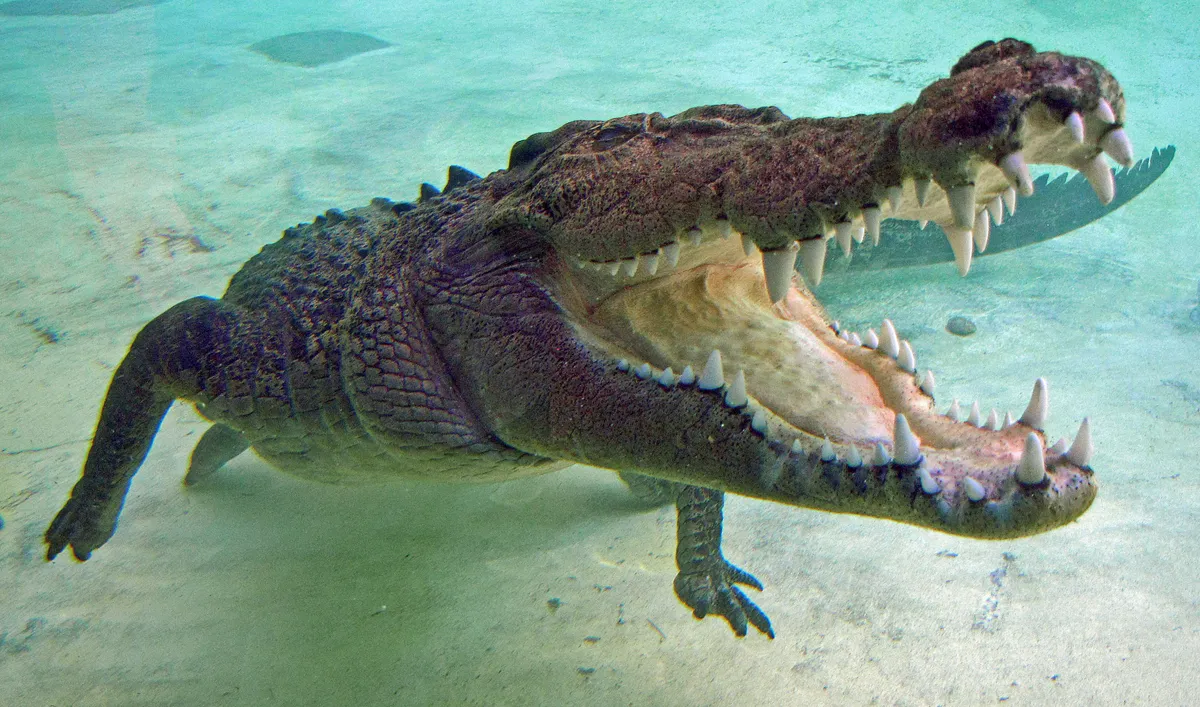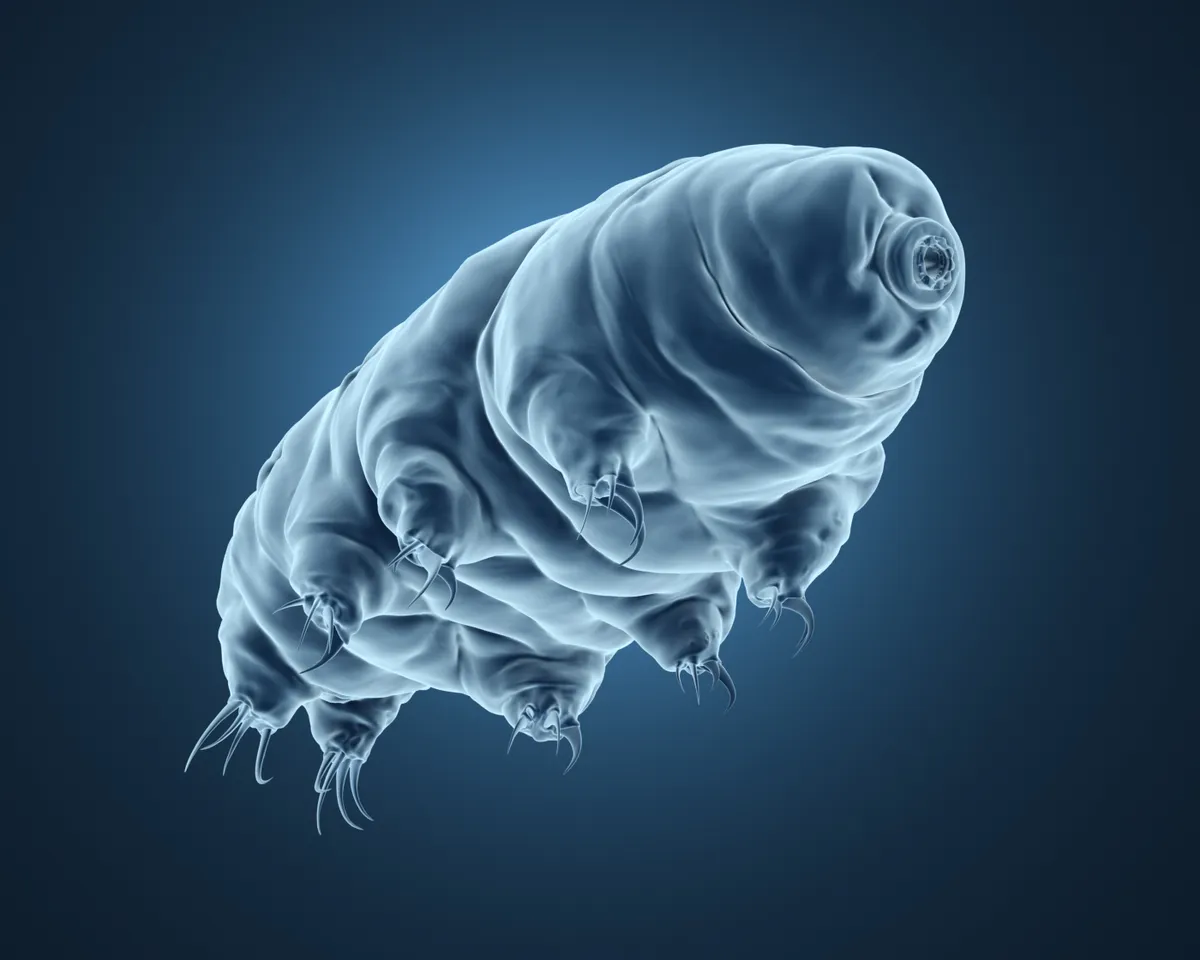In certain situations, there are animals that seem almost immortal as they not only survive but thrive in extreme circumstances, says Sheena Harvey.
The world's most indestructible animals on Earth
The animal that can survive fire
The trick the echidna, an Australian egg-laying mammal, employs to stay alive despite all around them being destroyed by a wildfire was only discovered in 2013. After a catastrophic blaze in Warrumbungle National Park in eastern Australia, it was noticed that the population of echidnas was unchanged from the numbers before the fire.
- It may look like a hedgehog but don’t be fooled – this weird mammal lays eggs and has a penis with four heads
- Can any animals survive wildfires?
This prompted researchers to set a controlled burn of a small area where there was a known population of echidnas to watch what they did. Far from running from the flames, the animals found a safe haven – a hollow tree stump or an underground burrow – and went to sleep. Their body temperature droppedand they entered a state of hibernation called torpor.
Their low temperature made them slightly fire-retardant and the shelter kept them safe until the fire passed over. That wasn’t the end of the story, though. Rather than risk starvation, the clever echidnas stayed in their Sleeping Beauty state until the burnt vegetation regenerated and provided food again.
The animal that can not only survive a bite from one of the world's most toxic snakes - but also eat it for dinner

The king cobra is one of the most feared snakes in India because of its venom, which is powerful enough to kill an elephant. But the reptile is also a favourite food for a mongoose. How can an animal many, many times smaller than an elephant be indestructible when bitten by a cobra?
In the first place, mongooses try their best to avoid being bitten by being speedy and agile. They dance around their snake prey, looking for an opening to pounce on its head and end the confrontation. They also have a thick coat so it’s hard for teeth to penetrate through to the skin.
- The animals that can tackle and eat the world's most venomous snakes
- 13 deadliest snakes: Meet the world's most venomous snakes whose lethal bites can kill a human...
But, if the worst occurs, assuming it doesn’t happen multiple times, mongooses have a defence mechanism against a fatal bite. Cobra venom disrupts nerve impulses by affecting a neurotransmitter in the body called acetylcholine and this disrupts the victim’s heart and breathing muscles.
Mongooses have a mutation of the acetylcholinereceptors in the membranes of vital organs that stops the venom from penetrating. So long as there isn’t an overwhelming amount of toxin delivered, the animal lives to hunt another day.
The animal that can live without water for long periods

Dromedary camels in the African and Middle Eastern deserts can live for around two weekswithout drinking water. When they do drink they can absorb the liquid at an incredible rate.
- How did the camel get its hump?
- The desert animals that thrive in some of the world's most hostile, inhospitable places – often in extreme temperatures
It takes a thirsty camel only 13 minutes to suck up 30 gallons of water. This is rapidly absorbedit into its bloodstream and distributed through its tissues to rehydrate its whole body. A camel is also designed to lose as little fluid as possible in normal bodily functions. It doesn’t sweat very much – it uses its thick coat as an insulator so it doesn’t need moisture evaporation to keep cool.
Its urine is thick and its faeces very dry. Even the expulsion of water vapour when it breathes is minimised by the mucus membranes in the camel’s nose. These cool the exhaled breath so its water content condenses inside the nose and is reabsorbed, rather than being lost to the desert air.
The animal that can emerge unharmed from a nuclear blast
It has long been said that cockroaches would be the only living things to survive a nuclear war, because they were found by scientists at the site of the Hiroshima atom bomb blast in Japan in 1945. However, the minute habrobracon wasp would beat the roach hands down in an extreme radiation event.
- Would any animals survive a nuclear explosion?
- Chernobyl Exclusion Zone: as humans fled the worst nuclear incident in history, animals moved in...
A lethal dose of radiation for humans is 1,000 rads (the measure of absorbed radiation), for a cockroach it is over 10,000 rads. Mind blowingly, this little wasphas been observed to survive X-rays of 158,080 rads.
So habrobracon hebetors are the real candidates for who could rule the Earth after nuclear war… but that would be for only for a limited time. Just over 4,000 rads makes the females sterile, and their lifespan is less than a month in any case, so their reign would be rather short.
The animal that can repel – most - attacks

Nothing beats a crocodile, not even a bullet. Their skin looks like medieval armour with interconnected bony, keratin-covered scales of various sizes, called scutes, and with further bony structures called osteoderms beneath them. As the saltwater crocodile is an apex predator, you’d be forgiven for wondering why it needs such tough skin.
Mostly, it’s as protection in fights with other crocodiles. It’s not unusual to see a croc with bite marks on its back, as their teeth are super sharp. Their jaws are also very powerful, generating enough force to crush a turtle shell, so having that flexible toughness is a good defence against neighbourly disputes.
Unfortunately, the attractive patterning of the square, flat scales of the crocodile’s belly makes this a desirable material for luxury goods – bags, belts, shoes and upholstery. The Australian saltwater crocodile’s skin is the most valued, costing around $10 Australian ($7 US/£5) per centimetre.
The animal that can survive living without eating for up to 10 years

The olm, a blind salamander, not only manage to live in complete darkness in caves in central and southeastern Europe, but they can do so without eating for up to 10 years. The way they cope with this extreme starvation is by consuming large quantities of small crustaceans, insect larvae and occasionally earthworms all in one go and whole.
The nutrients from this food are stored in their livers and released slowly as energy. If food is particularly scarce, the olm can slow down its metabolism and reduce its physical activity until it finds its next meal. In acute cases, it can reabsorb part of its own body tissue to keep itself going. Theoretically, as an olmcan live into its 50s, it might only need to eat a dozen times in its life, but that would be extreme.
The animal that can survive a flood
South American fire ants have a clever strategy for surviving a flood without losing any of the members of the colony to the rising waters. They clump together, tens of thousands strong, and flatten out into a living raft.
The members of the raft constantly swap places to ensure no ant is underwater for too long. Because the weight of the group is distributed over an area, they don’t sink, and they can float around in that way for weeks until the floodwaters have receded or they wash up on a suitable piece of dry land.
They are so adept at dealing with watery hazards they have a different strategy for dealing with heavy rain. In that case they form themselves into a tall, pyramidal tower around a plant stem and this allows the water to pass over them safely without carrying off any ants.
The animal that is the ultimate survivor

The closest lifeform to indestructability is the microscopic tardigrade, found in freshwater mosses and lichens around the world. This little creature combines all the superpower capabilities of our other seven candidates. It has a cuticle skin that resembles the exoskeleton of an insect and covers it in a tough protective barrier against external pressures.
It can live up to 30 years without food and can survive in temperatures from absolute zero to boiling point. It can withstand the pressures of the deepest ocean trench and the lack of atmosphere and radiation of outer space.
Although its ideal habitat is moist, if its home dries up it can just wait out the drought. In order to do this the tardigrade will dehydrate itself. It forces all the water out of its body, curls up its eight legs, rolls into a ball and goes into a deep sleep. Most definitely a case of survival of the fittest!





